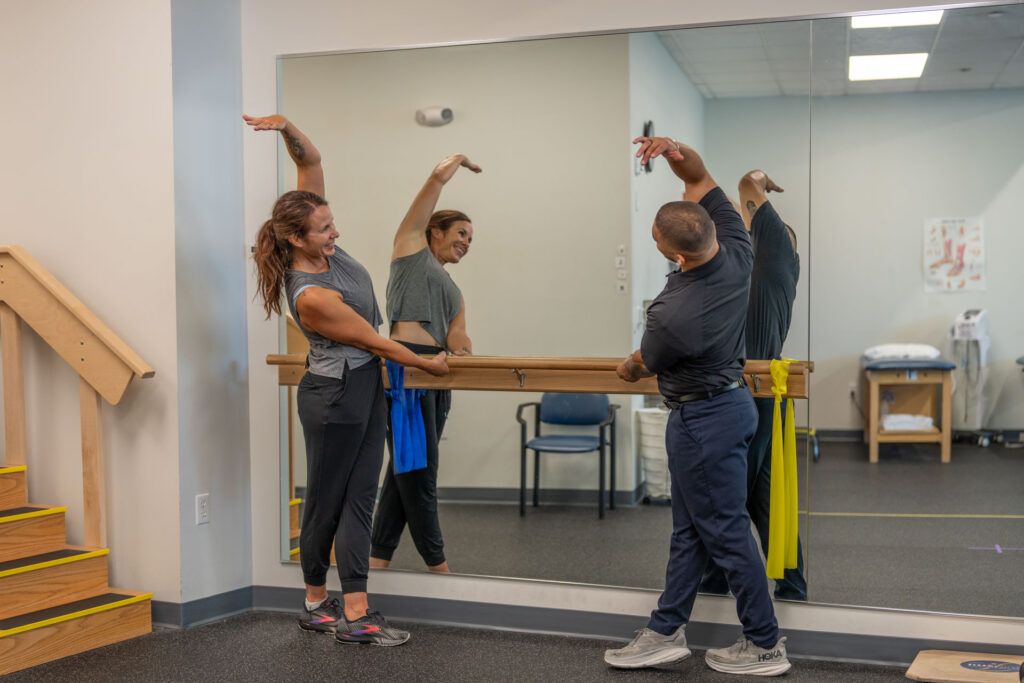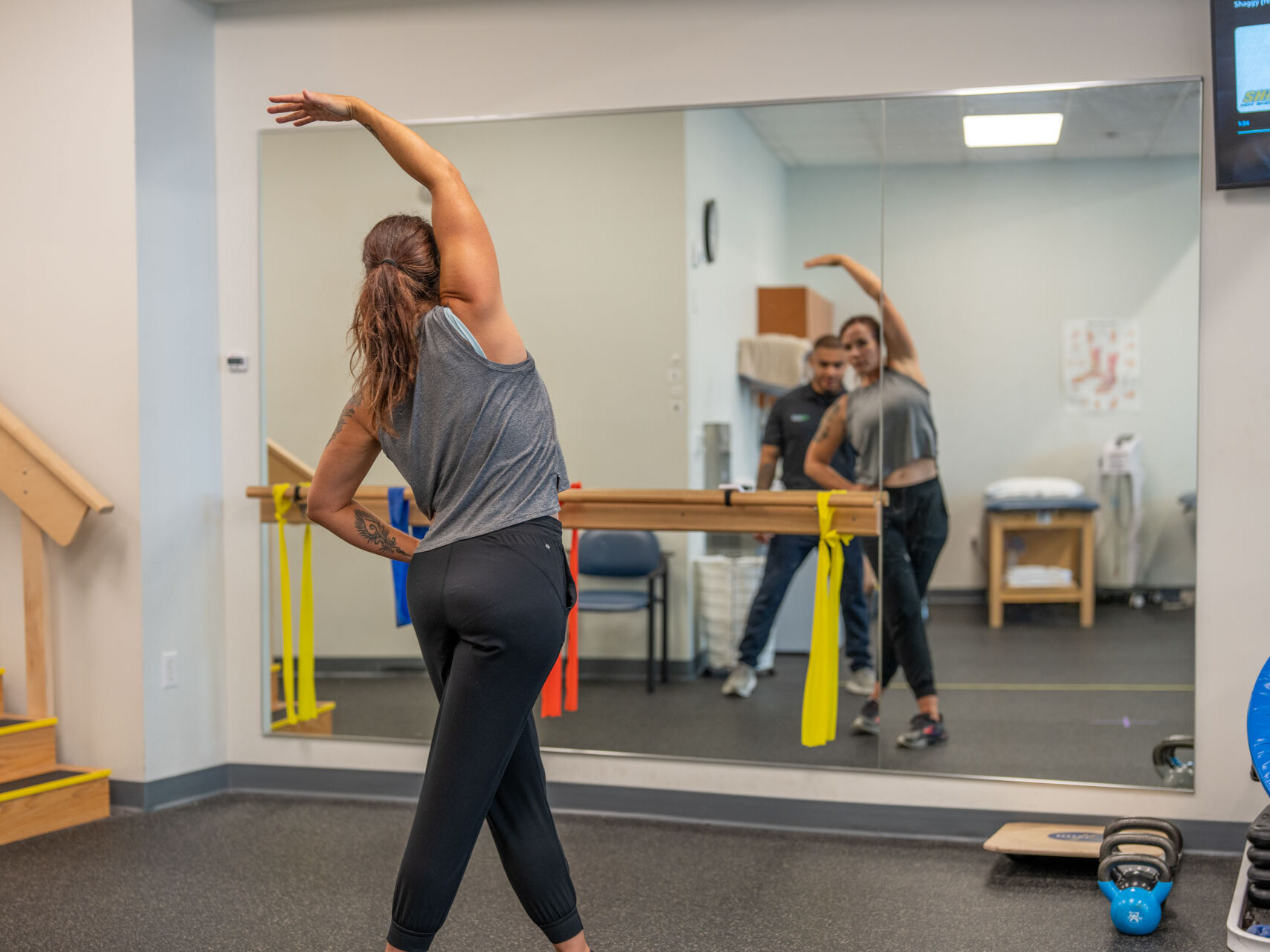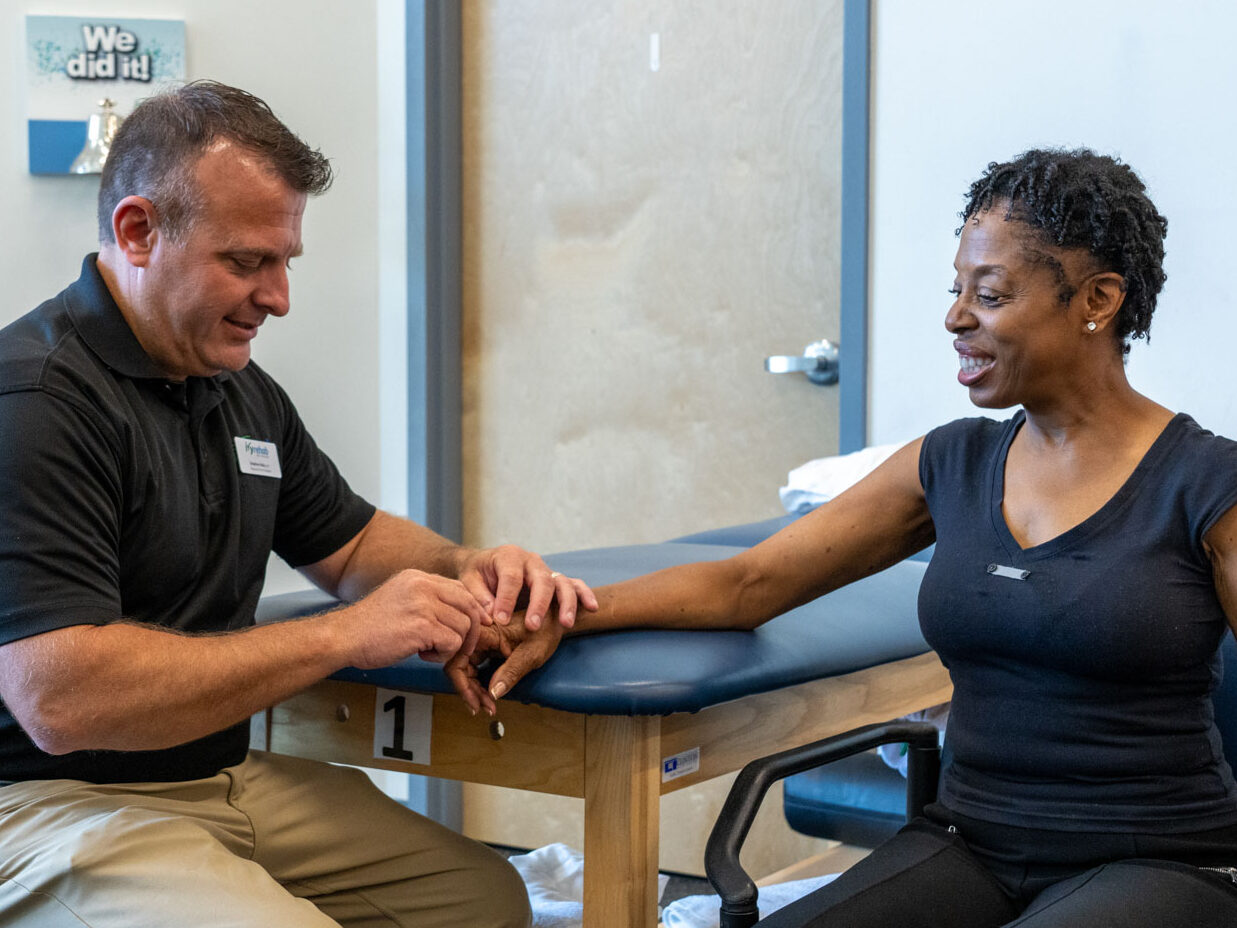
Performing Arts Physical Therapy
Select Ivy Rehab Network clinics offer Performing Arts Physical Therapy, specializing in the unique needs of instrumentalists and dancers. Musculoskeletal injuries for musicians and dancers are common and can have a substantial impact on performance and career longevity. Our specialized care focuses on prevention, rehabilitation, and optimizing physical function to help performing artists achieve peak health and sustainability.
What is Performing Arts Therapy?
Performing arts physical therapy is a specialized branch of physical therapy that focuses on the unique needs of the performing artist, including dancers and instrumental musicians. This form of therapy aims to prevent and treat injuries commonly associated with performing arts activities, such as muscle strains, tendonitis, and joint problems, by addressing specific movement patterns, biomechanics, and conditioning requirements essential for optimal performance.
Our experienced performing arts physical therapists work closely with artists to assess their physical capabilities, develop personalized rehabilitation plans, and provide education on injury prevention techniques and ergonomic practices. By integrating principles of dance medicine, sports medicine, and rehabilitation science, performing arts physical therapy not only helps performers recover from injuries but also enhances their overall performance abilities, promoting longevity and sustainability in their careers.


Conditions We Treat
At Ivy Rehab, our Performing Arts Physical Therapy programs focus on common musculoskeletal injuries and conditions seen in performing artists, including:
- Muscle strains and overuse injuries affecting the neck, shoulders, back, arms, and legs
- Tendonitis and tendinopathies, particularly in the wrists, elbows, and ankles
- Joint dysfunction and instability impacting performance movements
- Postural imbalances that lead to inefficient movement and increased injury risk
- Repetitive stress injuries specific to instrumentalists such as carpal tunnel syndrome and thoracic outlet syndrome
- Dance-specific injuries, including ankle sprains, plantar fasciitis, hip impingement, and stress fractures
- Chronic pain conditions related to overtraining or improper technique
Our therapists use a variety of manual therapy techniques, therapeutic exercise, and Pilates-based rehabilitation to restore strength, flexibility, endurance, and alignment tailored to each artist’s discipline.
How we approach ABA therapy.
Physical therapy for instrumental musicians
Instrumental musicians frequently experience upper extremity musculoskeletal injuries, with occurrence rates between 39% and 87%, comparable to other work-related injuries. Even minor injuries can significantly impact a musician’s performance and career longevity.
The majority of injuries involve regional muscle pain syndromes and tendon damage, commonly affecting the arms, hands, shoulder blades, and upper back. Risk factors include both modifiable elements, such as muscle strength and practice duration, and non-modifiable factors like gender, with women experiencing higher injury rates. Injury frequency also varies by instrument played.
Musicians undergo thorough evaluation to identify the mechanism of injury and individual risk factors. Treatment targets the affected areas while incorporating physical therapy exercises and training to improve posture, movement efficiency, and muscular endurance — all essential to enhance performance and prevent future injuries.
Physical therapy for dancers
Dancers face unique musculoskeletal challenges that require specialized care. Our performing arts physical therapy for dancers integrates manual therapy, patient education, and therapeutic exercise—often incorporating Pilates—to enhance posture, strength, endurance, flexibility, and overall function.
We perform a detailed evaluation based on dance science principles to identify the specific mechanism of injury and risk factors. Treatment targets areas of pain and dysfunction while providing tailored exercises to improve posture and optimize movement patterns, supporting safe and efficient dance performance.


Start living your best life.
Begin your journey close to home.
FAQs
Can I use preventative performing arts physical therapy?
Yes! Preventative Performing Arts Physical Therapy is highly effective for reducing injury risk before problems occur. By assessing your biomechanics, movement patterns, and physical conditioning, therapists design personalized injury prevention programs. These programs include targeted exercises, posture training, and education on proper technique and body mechanics to help you perform safely and sustainably.
What does performing arts physical therapy look like?
Performing Arts Physical Therapy combines manual therapy, therapeutic exercises, and movement training tailored specifically for your discipline. Treatment often includes posture correction, strength and flexibility exercises, Pilates-based conditioning, and education on injury prevention and ergonomics. Therapists work closely with you to develop a customized plan that promotes healing, improves performance, and supports long-term physical health.
Why would I do performing arts physical therapy?
Performing Arts Physical Therapy is designed to address the unique physical demands and injury risks faced by dancers, musicians, and other performing artists. It helps you recover from injuries such as muscle strains, tendonitis, and joint issues, while improving your posture, movement efficiency, and overall performance. This specialized therapy supports long-term career health by reducing pain, preventing future injuries, and enhancing your physical capabilities.

